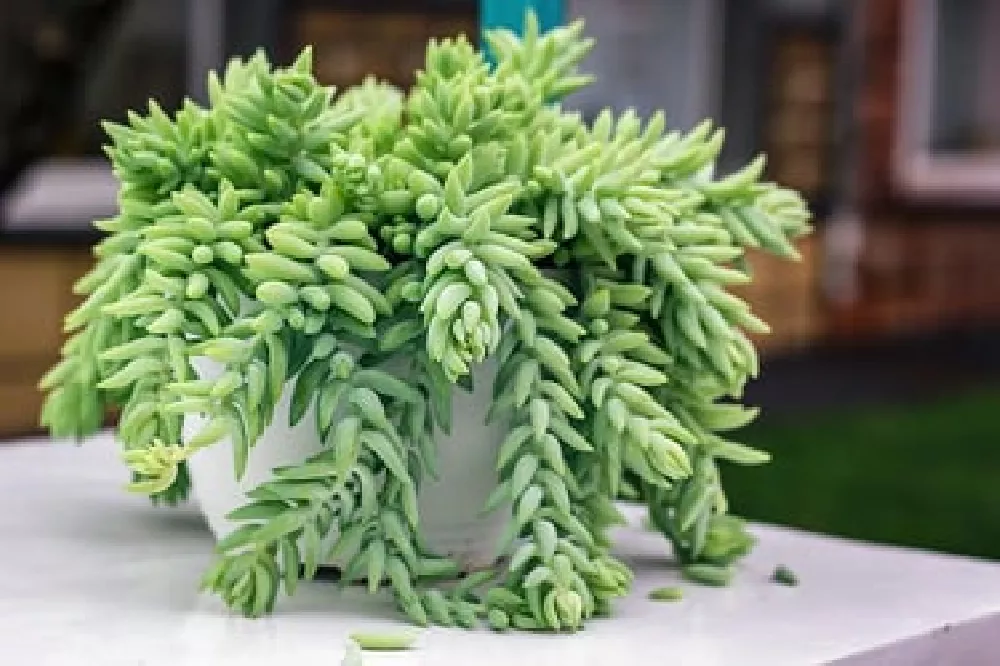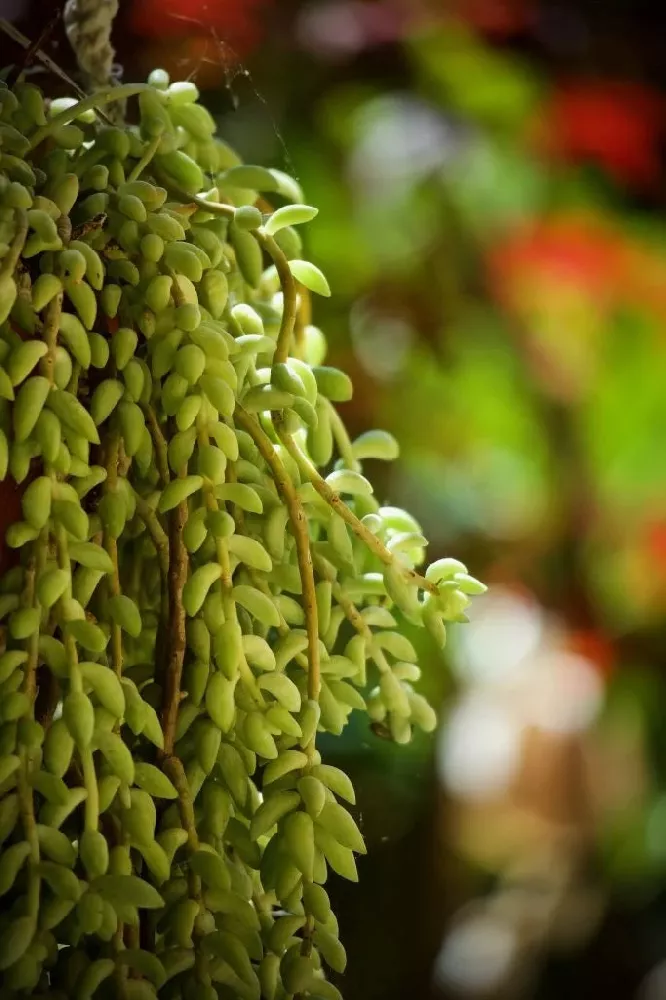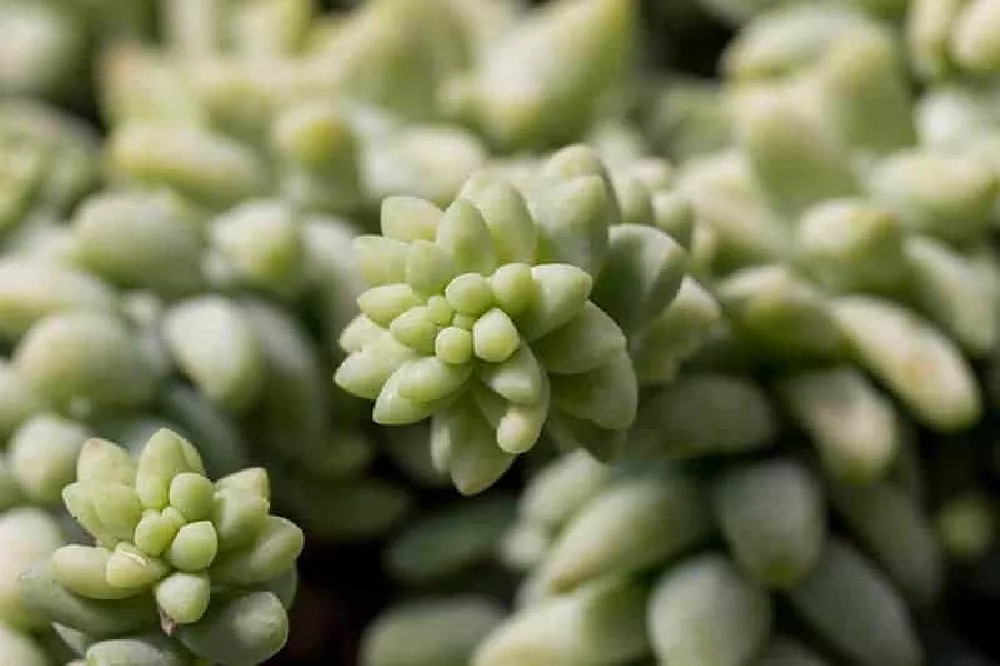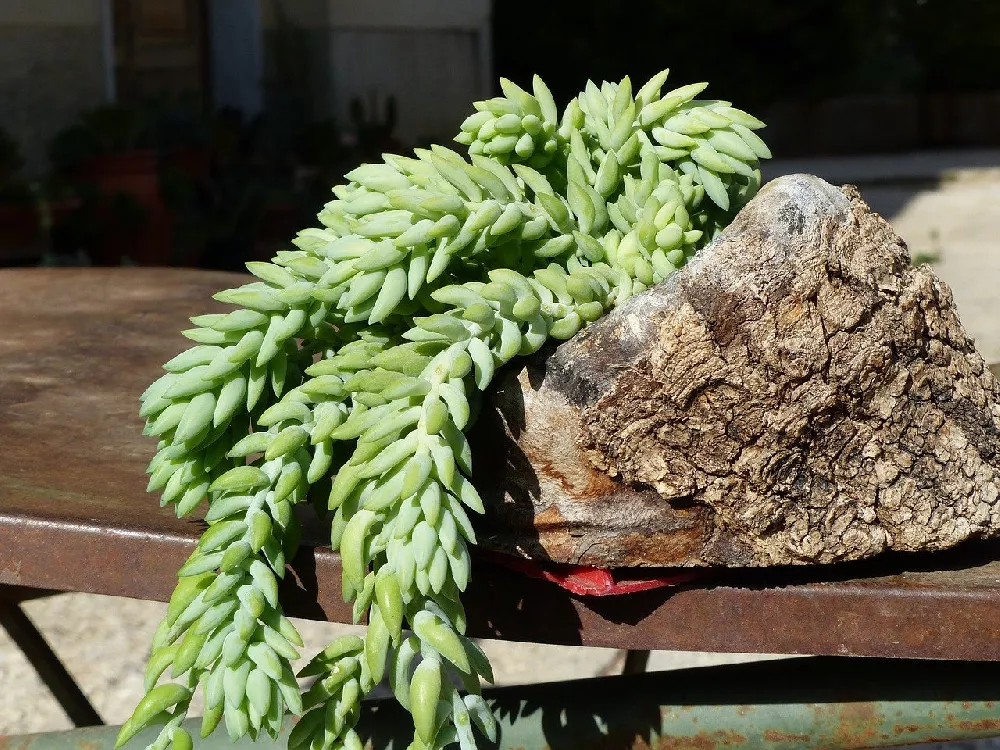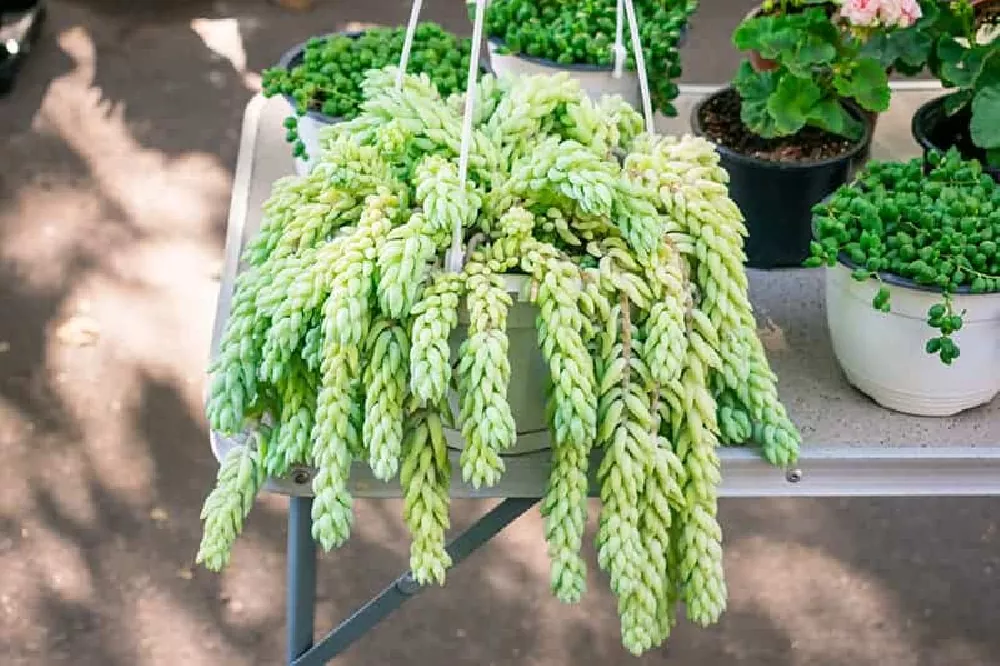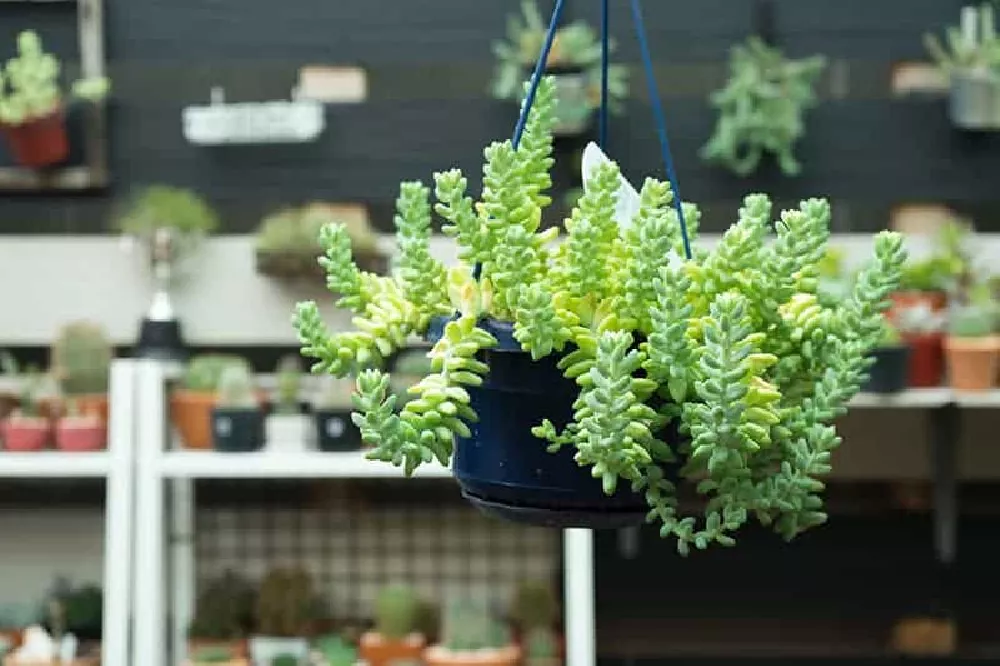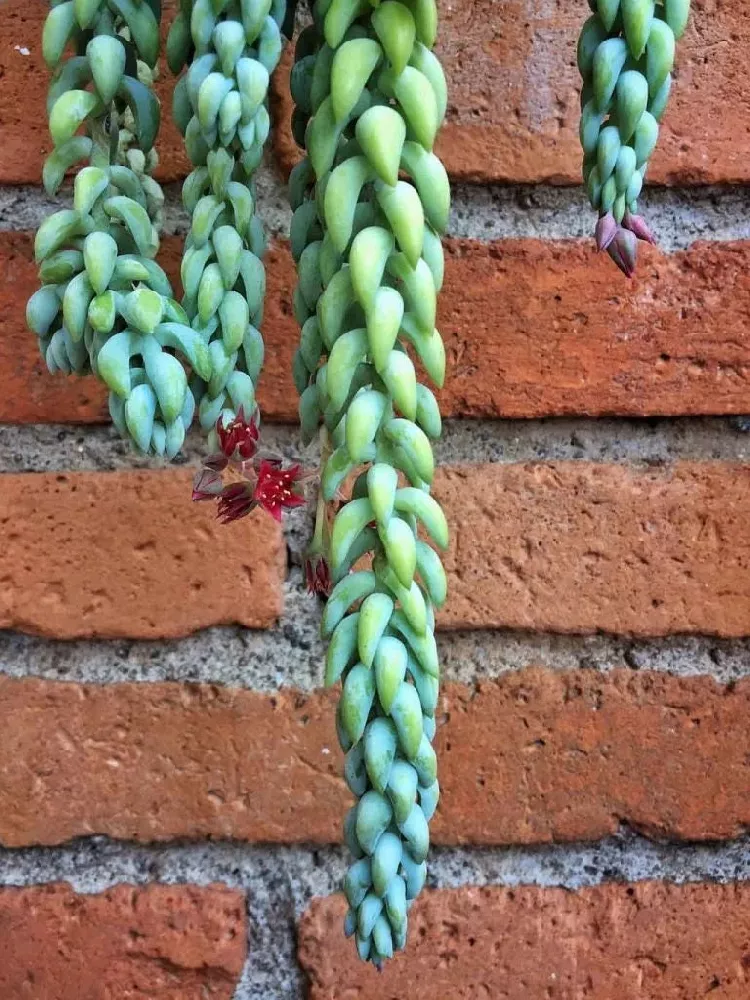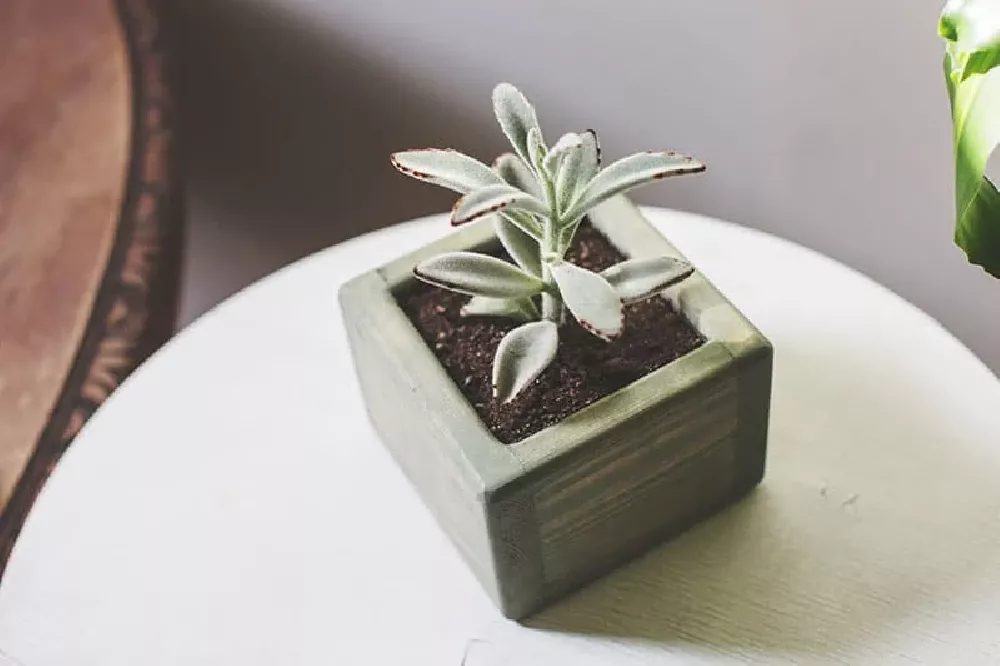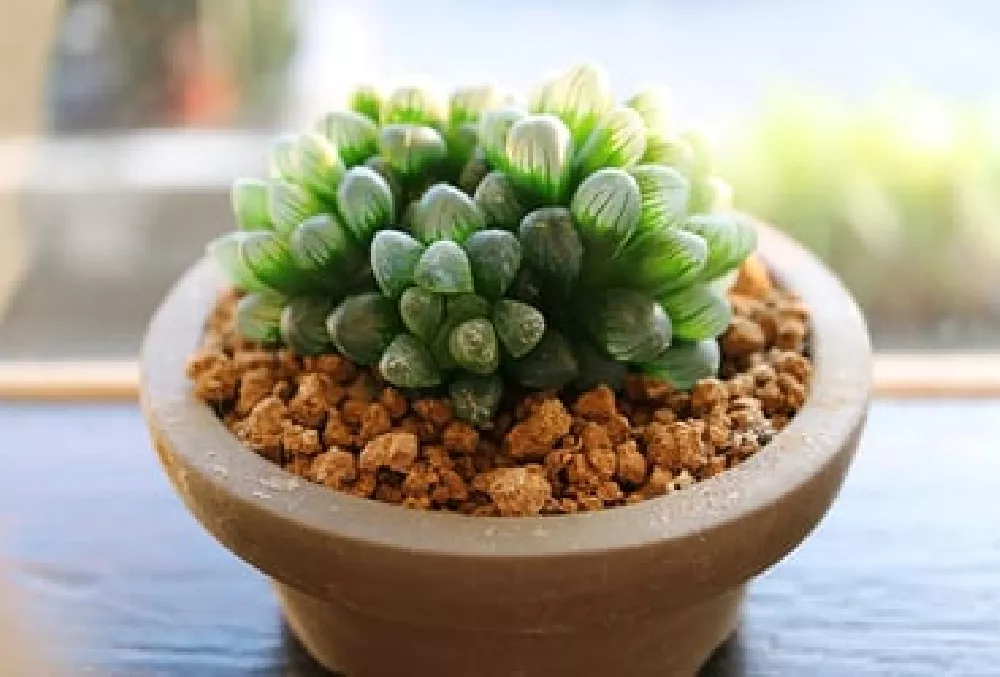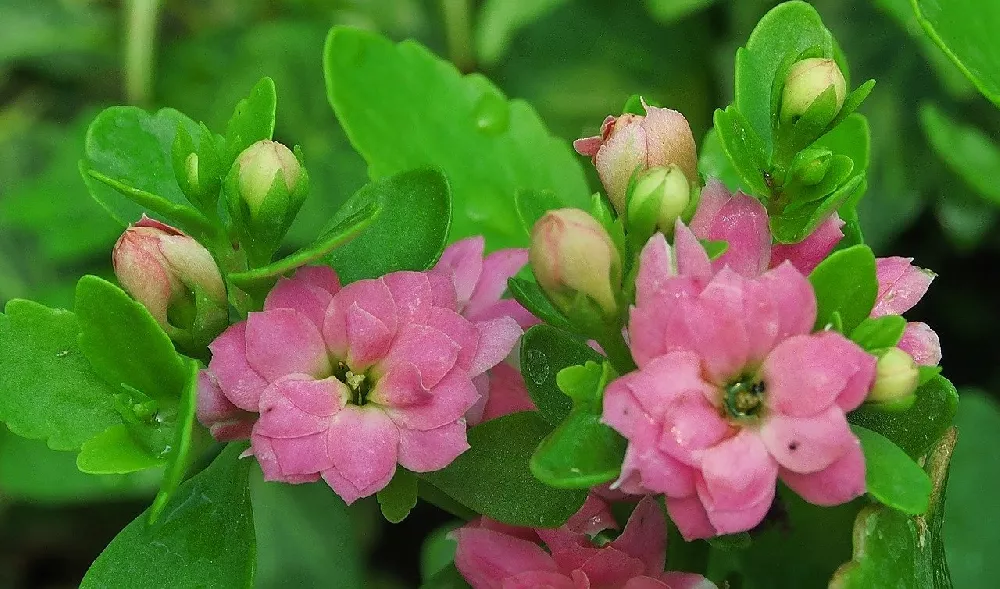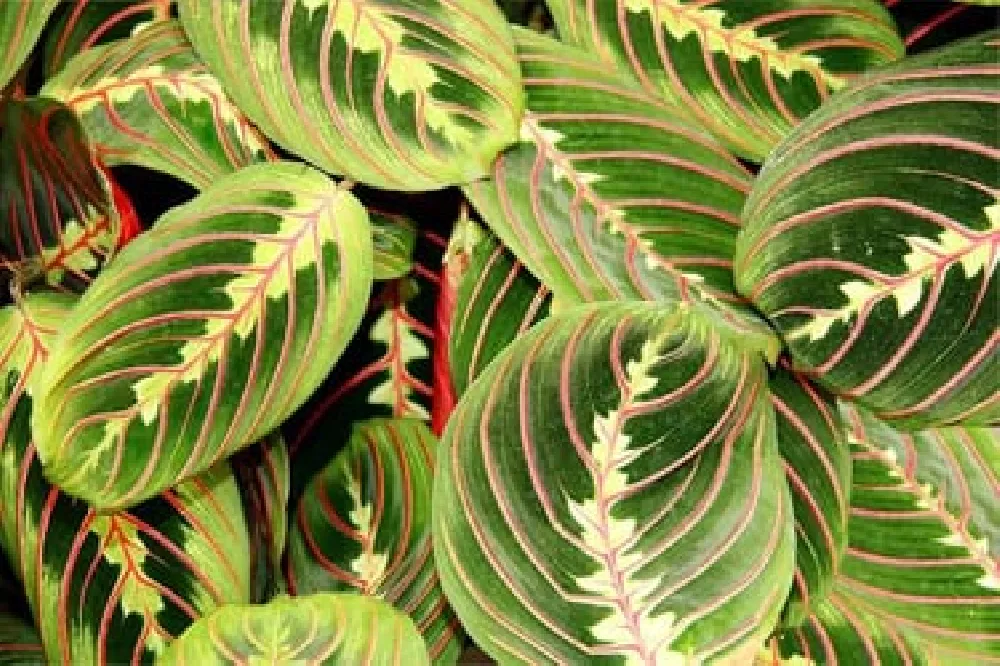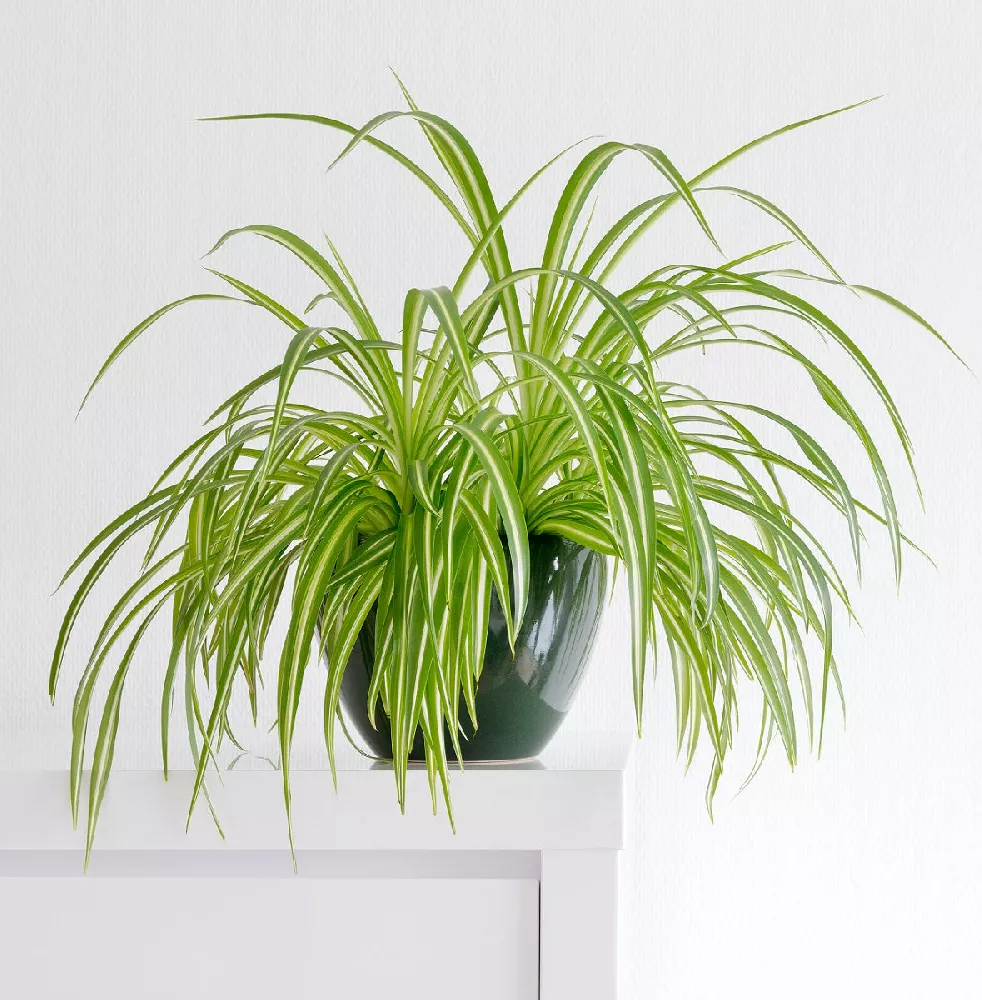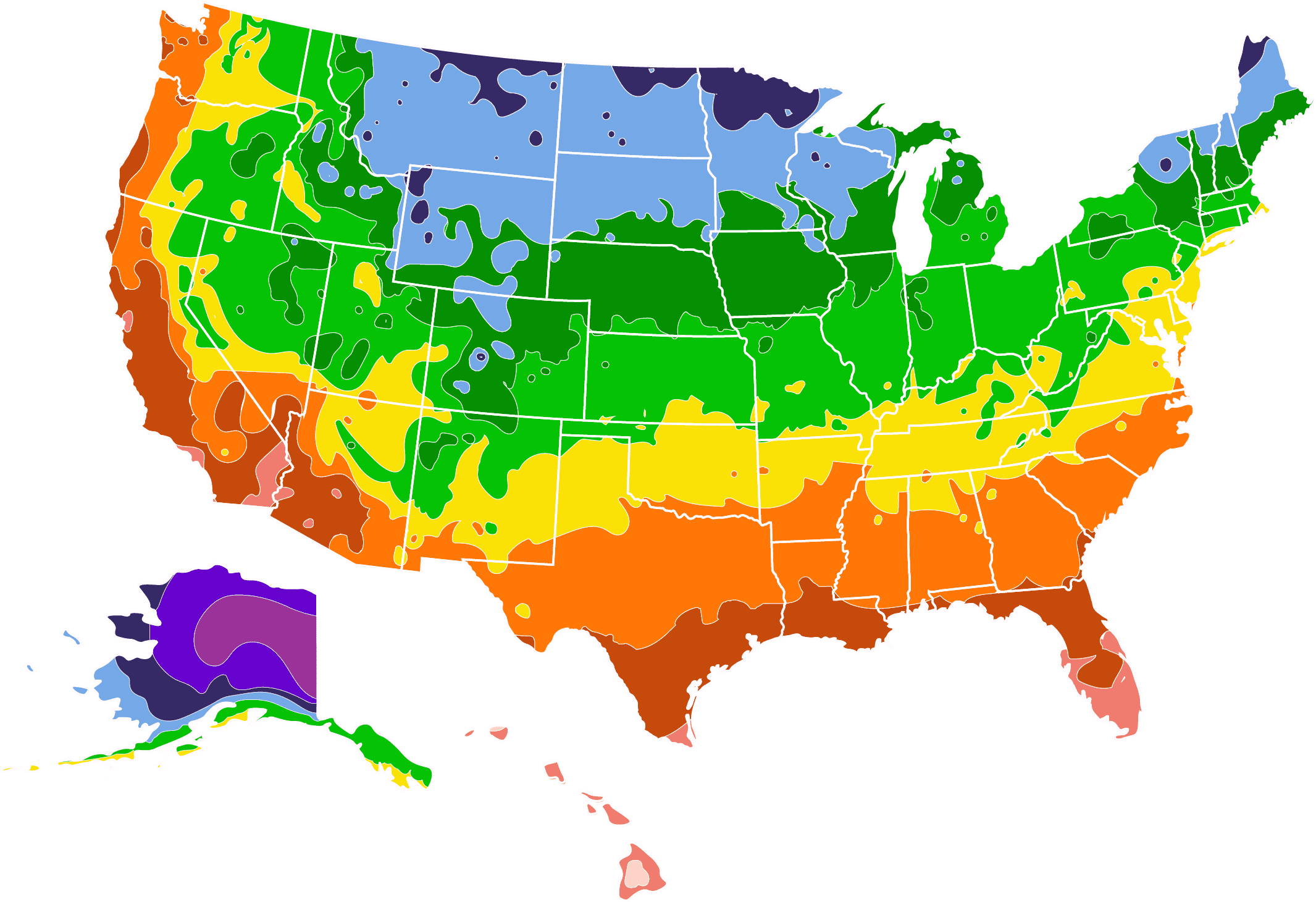- Home >
- Houseplants >
- Burros Tail
Burros Tail for Sale
Mountain Crest Gardens- 2.0" Pot- Sedum morganianum - Burro's Tail, Donkey's Tail
Youngs Garden Shop- 3-4" pot - Sedum morganianum Burro's Tail
Cacti - 1-gallon - Sedum morganianum Burro's Tail
Harddy - 2 Inches- Sedum Burrito - Burros Tail - Donkey Tail
Enter your zip code to find nearby stores that may carry this plant.
The burro’s tail is one of the most attention-grabbing and fascinating succulents. A member of the Sedum Genus, it transforms over years from clusters of diminutive, upright bundles of puffy, blue-green, tear-drop shaped leaves to luxuriant ropes reminiscent of braids that trail downward, each extending as far as three to four feet long. Highly ornamental, the burro’s tail is a tropical plant native to Mexico and Central America.
- The burro’s tail prefers several hours of warm sunlight each day.
- Displays best in a hanging container or a tall vessel that will allow its stems to trail.
- Only needs to be watered once a month indoors or every few weeks outdoors.
Planting and Care
Planting instructions
One of the most challenging aspects of owning and caring for a burro’s tail is its delicacy. Bumping the plant is likely to cause leaf loss. Fortunately, it does not require frequent repotting and is happy to be rootbound, so once your plant is in the right container and environment you will not need to worry about jostling it again for years. It will thrive in a pre-mixed cactus soil or potting soil combined with pumice, clay granules or pea gravel. After repotting, wait several days before providing water.
Burro’s tail will work well as a hanging plant or placed in a tall pot that allows its stems to trail down over its sides. Terra cotta or unglazed ceramic will wick away excess water and prevent it from getting oversaturated, and whatever container you choose should either have drainage holes or at least two inches of gravel or rocks in the bottom to keep its roots from sitting in water. Mature burro’s tails can hold tremendous quantities of water in their leaves, so standing vessels should be weighty enough to keep them from tipping after your plant has been watered.
Placement of your burro’s tail needs to be based on both its physical needs and preventing bumping, jostling, or even exposure to too much wind. Lighting should be bright and direct and temperatures kept between 65 and 75 degrees Fahrenheit. If your burro’s tail needs more sunlight its leaves will turn to a yellow color, will not grow as densely on the stems, and will be more likely to drop off. Too much hot sunlight will result in a heavier coating of protective epicuticular wax. If you keep your burro’s tail outside, be sure to bring it in before the temperatures drop below the mid-forties.
Watering and nutrients
The biggest threat to a succulent like the burro’s tail is overwatering. Its leaves can store water for a very long time, and too much water will lead to the entire plant rotting. Large, mature plants can tolerate being deeply watered every two weeks during the summer, while younger plants should only be watered every three weeks. Indoor plants should be watered even less frequently, not more than once a month. Soil should be allowed to dry out completely between waterings, and if you are not sure whether your burro’s tail needs water, examine its leaves. When they are full of water their plumpness will resemble that of a grape, while they will pucker like raisins when they are getting too dry. Watering should be cut back in the fall and winter.
To encourage growth, add fertilizer to your burro’s tail in the spring, when it enters its growing season. Choose a controlled release fertilizer that balances nitrogen, phosphorus and potassium in a 20-20-20 combination. Experts recommend enriching the soil every spring with worm castings or compost.
Pests and diseases
The most common health concerns impacting the burro’s tail comes from overwatering, which can lead to wilting or rotting leaves or root rot. Mealybugs or aphids will occasionally infest an outdoor plant and are best managed by using a mister to spray the plants with either neem oil or with a mixture of 20% rubbing alcohol to 80% water.
Light
Like most succulents, burro’s tail enjoys plenty of sun with some shade. It tolerates heat incredibly well, but it can suffer from burns if positioned in too much bright light. If you keep this plant indoors, the best spot will be in one which receives bright indirect light. A bright windowsill with some protection, such as a sheer blind would work well.
When grown outside, plant the burro’s tail in a position that benefits from the morning light, and then has some afternoon shade when the sun moves around. This will ensure that the plant’s requirements for light are met without risking burn damage.
You will know if your plant is suffering in the blistering afternoon sun because the color of the foliage will dull. The plant at its healthiest should be pale blue-green, but when kept in too much sunlight, it will dull to gray-green. If this happens, you will need to move your plant to a more sheltered position to give it some relief and enable it to recover.
Temperature
Burro’s tail is hardy to USDA zones 9 through 11, so it is a good choice of plant to grow outside if you live in a warm climate. Indoors as a houseplant, it likes to be in temperatures in the region of 65-75 °F, though it will tolerate marginally cooler temperatures in the winter when it is dormant.
Keep it away from any cold drafts by ensuring it isn’t placed near a doorway or open window, and also don’t keep it close to any heating vents as this may overheat the plant and dry it out.
With regard to high temperatures, this plant is extremely heat-tolerant and will cope easily with heatwaves and intense summers. It may need to be shaded in the heat of the afternoon, but this is to protect it from the light rather than the heat.
Humidity
This plant does well in average household humidity. Do not mist the plant or make any other attempts to increase humidity as it will not tolerate high humidity. Don’t grow burro’s tail in bathrooms or kitchens where humidity is naturally higher.
Propagation
One of the trickiest things about caring for this plant is finding a way to prevent its leaves from dropping off. Although it is a very hardy plant with regards to drought-tolerance and heat-tolerance, it can be physically quite fragile. Even the most experienced plant lovers find a puddle of fallen leaves on the ground after handling the plant, and some people even report that just watering the plant is enough disturbance to make leaves drop.
Fortunately, like most succulents, burro’s tail propagates easily. Simply collect any dropped leaves and set them aside for a few days to allow the skin to scab over. Then, insert the leaves into the soil of your burro’s tail plant with half of the leaf sticking out of the soil. Keep the soil moist, and your dropped leaf will soon be sending out a new ‘tail,’ adding fullness to your plant.
Alternatively, if you want to create a whole new burro’s tail plant, you can propagate from stem cuttings. You will need to take cuttings of several inches in length and remove a third of the leaves from the stem, starting at the cut end. Set the cutting aside for anywhere between a few days and a few weeks, while the raw fleshy parts of the stem develop new dry skin.
Once this has happened, you can place the bare end of the stem in a growing medium, keeping it moist, and it will develop roots. To make a new lush plant, take several of these cuttings and propagate them all in one plant pot.
Repotting
Burro’s tail likes to be kept root bound in a small pot, so it is possible that you will never have to repot it. This is fortunate because the leaves of the plant are so susceptible to dropping when you handle it that repotting it could severely damage the look of the plant and cause lots of leaf loss.
Flowers
This plant can produce flowers, but it does so rarely. Burro’s tails grown outdoors are much more likely to bear flowers, as those grown inside often never produce flowers at all. The flowers of this plant are small, scentless, and star-shaped. They can be red, purple, or anywhere in between and appear in spring and summer.
Even when the plant does bloom, it is usually only with a handful of flowers. The plant is instead grown for its interesting foliage (Royal Horticultural Society).
Common Problems
Leaf Loss
The most common problem with this plant is leaf loss. Some people find that if they so much as look at the plant, it will drop its leaves! The best way to prevent this problem is to limit the amount of time you have to handle it.
Don’t make a habit of disturbing the plant by moving it, and always water it in situ rather than taking it over to a basin. Position the plant in an area where it won’t be disturbed, such as hanging in a high corner or on a windowsill. Refrain from repotting this plant for as long as possible, and keep it out of reach of the wandering hands and paws of children and pets (North Carolina State University Extension).
Burro’s Tail Varieties
Depending on your size preferences, you might want to look into growing one of these two varieties.
Sedum burrito ‘Baby Donkey Tail’
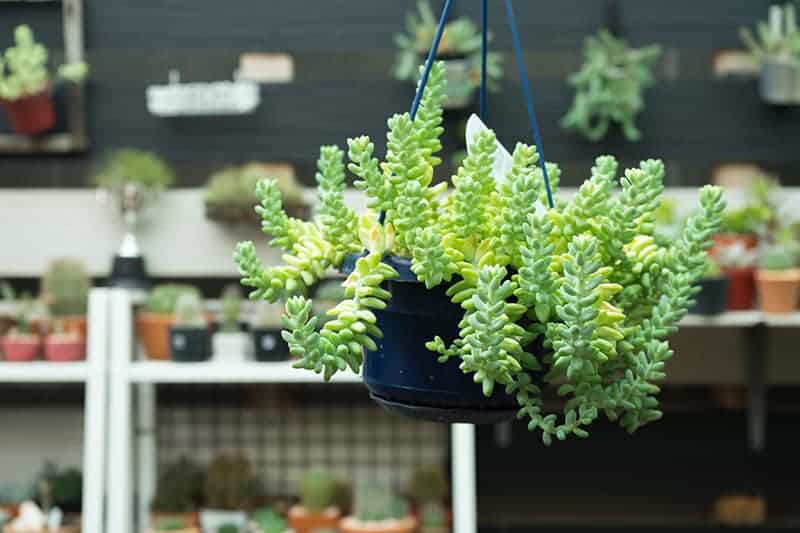
Sedeveria ‘Giant Burro’s Tail’
This plant is actually a hybrid of two different succulents; the burro’s tail and echeveria. It features big pointy leaves like those you see on echeverias, but they grow on draping stems to create an extra chunky looking burro’s tail plant. Some of the ‘tails’ of this plant will also grow upright.
FAQs
Do burro’s tails ever bloom?
Though outdoor burro’s tails do produce flowers, it is much rarer for blooms to appear on plants grown indoors. When they flower, they produce clusters of star-shaped pink to red blossoms that will attract bees and flies. Only mature plants will flower. To encourage blooms, allow your plant to spend the summer outside and then move them inside to a cooler location with temperatures between 50 and 60 degrees Fahrenheit over the winter. Be careful when moving your plant back outdoors as it needs to acclimate to brighter conditions.
Is burro’s tail poisonous?
The burro’s tail is not toxic to children or to animals, but because of its delicacy it is a good idea to keep it well out of reach anyway.
